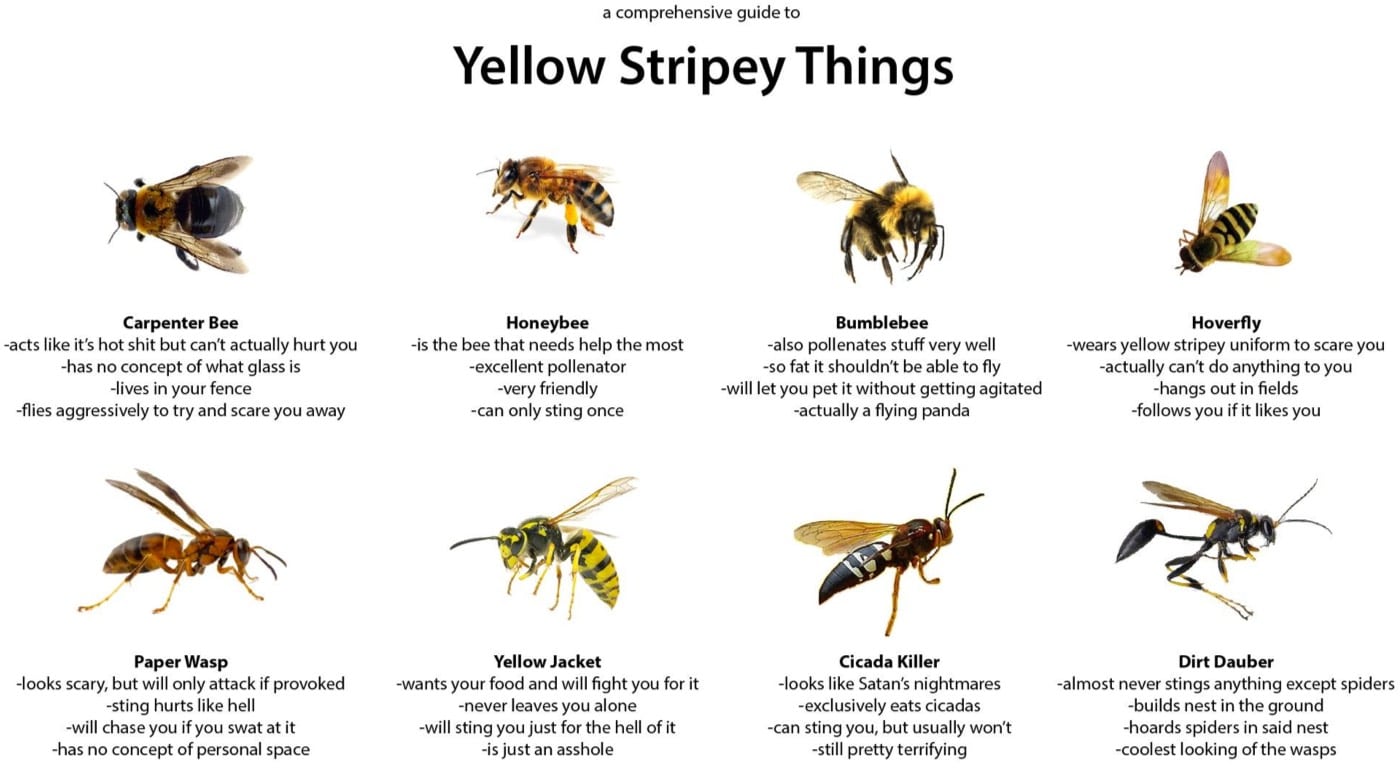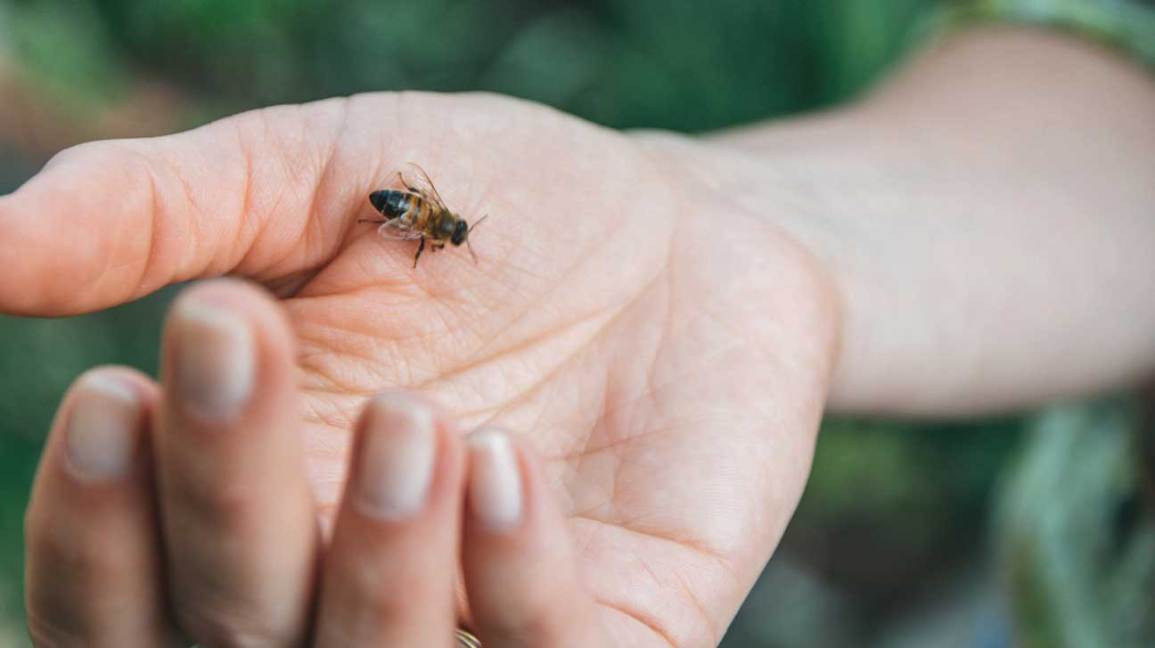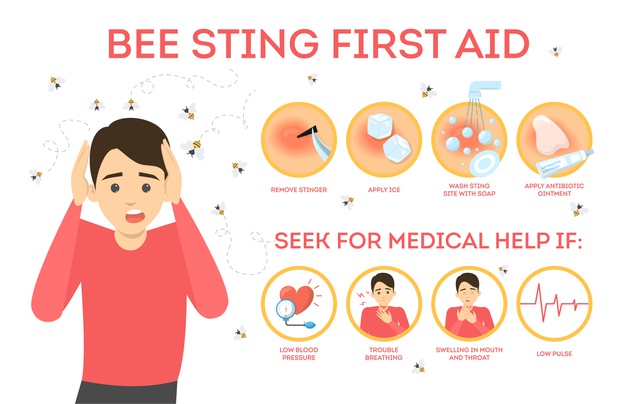Treating bee and wasp stings depends on their severity. The majority of problems that require medical attention come from an allergic reaction to the sting. In most cases, complications from that reaction respond well to medications -- when given in time.
The most familiar sting is from honeybees, but some wasps and other insects can also sting. Yellow jacket wasps are the most common cause of allergic reactions to insect stings in the United States. The bee’s stinging apparatus consists of a sac of venom attached to a barbed stinger. When a bee or wasp stings, the sac contracts, pumping venom into the tissue. Wasps are more aggressive than bees, and they may sting you multiple times, resulting in more swelling and pain.

Wasps vs. bees
The main difference between wasps and bees is that bees are vegetarians and wasps are carnivores.
According to Keith Delaplane, PhD, Director of the Honey Bee Program at the University of Georgia, wasps feed off animal protein — which is why you might see them eyeing your hamburger at a summer barbecue.
Wasps are narrower than bees with pointed lower abdomens. Some types of bees, such as honey bees, will die after they sting, while wasps can sting more than once.
While both insects will defend their nest if threatened, wasps tend to be more aggressive and use their stinger as a weapon for hunting.
Symptoms
It can be hard to tell a wasp from a bee sting, Delaplane says, except for one notable marker.
If you're stung by a honey bee, it will leave its stinger in your skin, appearing as a little black dot in the sting. Wasps, on the other hand, will keep their stinger.
If a wasp stings you, you'll likely experience the following symptoms near the site:
- Redness and warmth
- Pain and swelling
- Hives
- Itchiness
The above symptoms are common and not a sign of an allergic reaction, Delaplane says.
Courtney Jackson Blair, MD, an allergist and immunologist in Virginia, says people experiencing an allergic reaction to a wasp sting will have symptoms that interfere with their ABCs: airway, breathing, and circulation. For example, these symptoms could include:
- Hives or swelling that is well beyond the sting area
- Trouble breathing
- Tickling or tightness in the throat or chest
- Lightheadedness or dizziness
- Vomiting
- Fainting
Insect sting allergies are rare, but can be fatal. In 2017, for example, allergic reactions to insect stings killed 89 Americans, according to the Centres for Disease Control and Prevention.
In order to develop an insect sting allergy, you need to be stung, Blair says — so you may not know you have an allergy until you experience symptoms.

Some people may only have mild or moderate allergic reactions that can be treated at home, but if you are experiencing multiple symptoms, it might be more severe.
If you think you are having a severe allergic reaction to an insect sting, Blair says you should call 911 or your local emergency medical services right away.
Home Treatment for Bee and Wasp Stings
Most insect stings for someone who is not allergic need no more than first aid given at home. Then you can avoid further stings by wearing protective clothing, using insect repellent, and staying out of infested areas.
Here are the steps you need to take after someone who is allergic has been stung:
- Remove any stingers immediately. Some experts recommend scraping out the stinger with a credit card.
- Applying ice to the site may provide some mild relief. Apply ice for 20 minutes once every hour as needed. Wrap the ice in a towel or keep a cloth between the ice and skin to keep from freezing the skin.
- Taking an antihistamine such as diphenhydramine (Benadryl) or a nonsedating one such as loratadine (Claritin) will help with itching and swelling.
- Take acetaminophen (Tylenol) or ibuprofen (Motrin)for pain relief as needed.
- Wash the sting site with soap and water. Placing hydrocortisone cream on the sting can help relieve redness, itching, and swelling.
- If it's been more than 10 years since your last tetanus booster, get a booster within the next few days.
- Most insect stings require no additional medical care.
If you know you may be allergic, especially if you've had a severe reaction in the past when stung by a bee or wasp, seek immediate medical help. Take an antihistamine such as diphenhydramine (Benadryl) or a nonsedating one such as loratadine (Claritin) as soon as possible. If you have been prescribed epinephrine (Adrenaclick, Auvi-Q, EpiPen, Symjepi, or a generic version of the auto-injector) for an allergic reaction, always carry two with you and use it as directed.

Medical Treatment for Bee and Wasp Stings
If you have a single sting with no allergic symptoms, you may require only local wound care such as cleaning and applying antibiotic ointment. Any stingers that remain will be removed. And you may be given an oral antihistamine to treat itching. The doctor may also tell you to use ibuprofen (Motrin) or acetaminophen (Tylenol) for pain. If your tetanus immunization is not current, you'll receive a booster shot.
With mild allergic symptoms such as a rash and itching over your body but no problems with breathing or other vital signs, you may be treated with an antihistamine. You may also be given steroids. In some cases, the doctor will give you an epinephrine (adrenaline) injection. Treatment may be started at the scene or in the ambulance by the emergency medics. If you are doing well, you may be sent home after observation in the emergency department.
If you have a more moderate allergic reaction such as a rash all over the body and some mild problems breathing, you will likely receive injections of antihistamines, steroids, and epinephrine. Some of these treatments may be started at the scene or in the ambulance by emergency medics. You will likely need to be observed for a prolonged period of time in the emergency department or in some cases be admitted to the hospital.
If you have a severe allergic reaction such as low blood pressure, swelling blocking air getting into the lungs, or other serious problems breathing, you have a true life-threatening emergency. Treatment may include placing a breathing tube into your trachea. You will likely be given injections of antihistamines, steroids, and epinephrine. Intravenous fluids may also be given. Some of these treatments may start at the scene or in the ambulance. You will be closely monitored in the emergency department and likely be admitted to the hospital -- perhaps the intensive care unit.
With multiple stings -- more than 10-20 -- but no evidence of an allergic reaction, you may still need prolonged observation in the emergency department or admission to the hospital. At that point, the doctor may order multiple blood tests.
If you are stung inside the mouth or throat, you may need to remain in the emergency department for observation, or you may need more intensive management if complications develop. If you are stung on the eyeball, you will likely need to be evaluated by an eye doctor.



